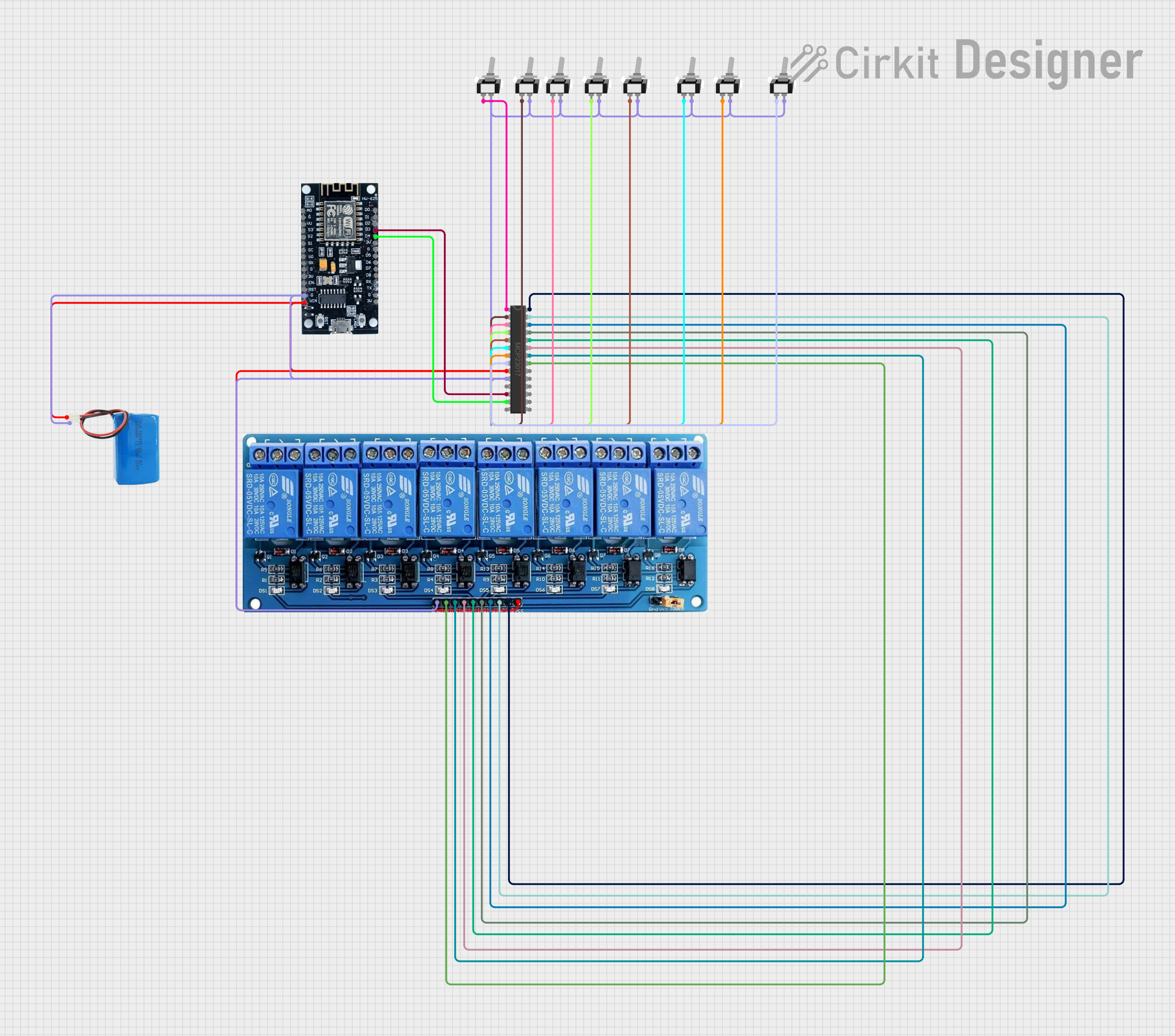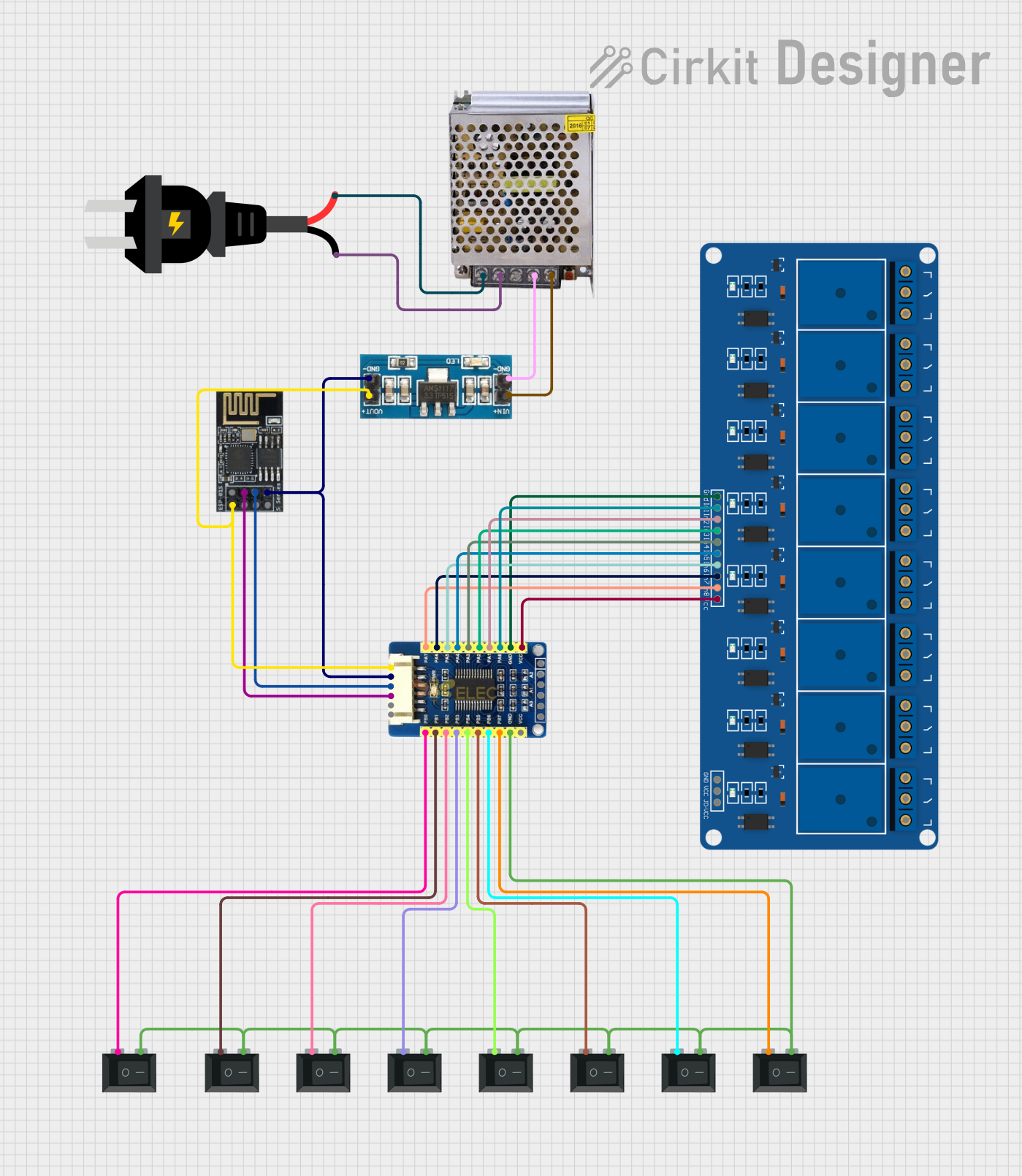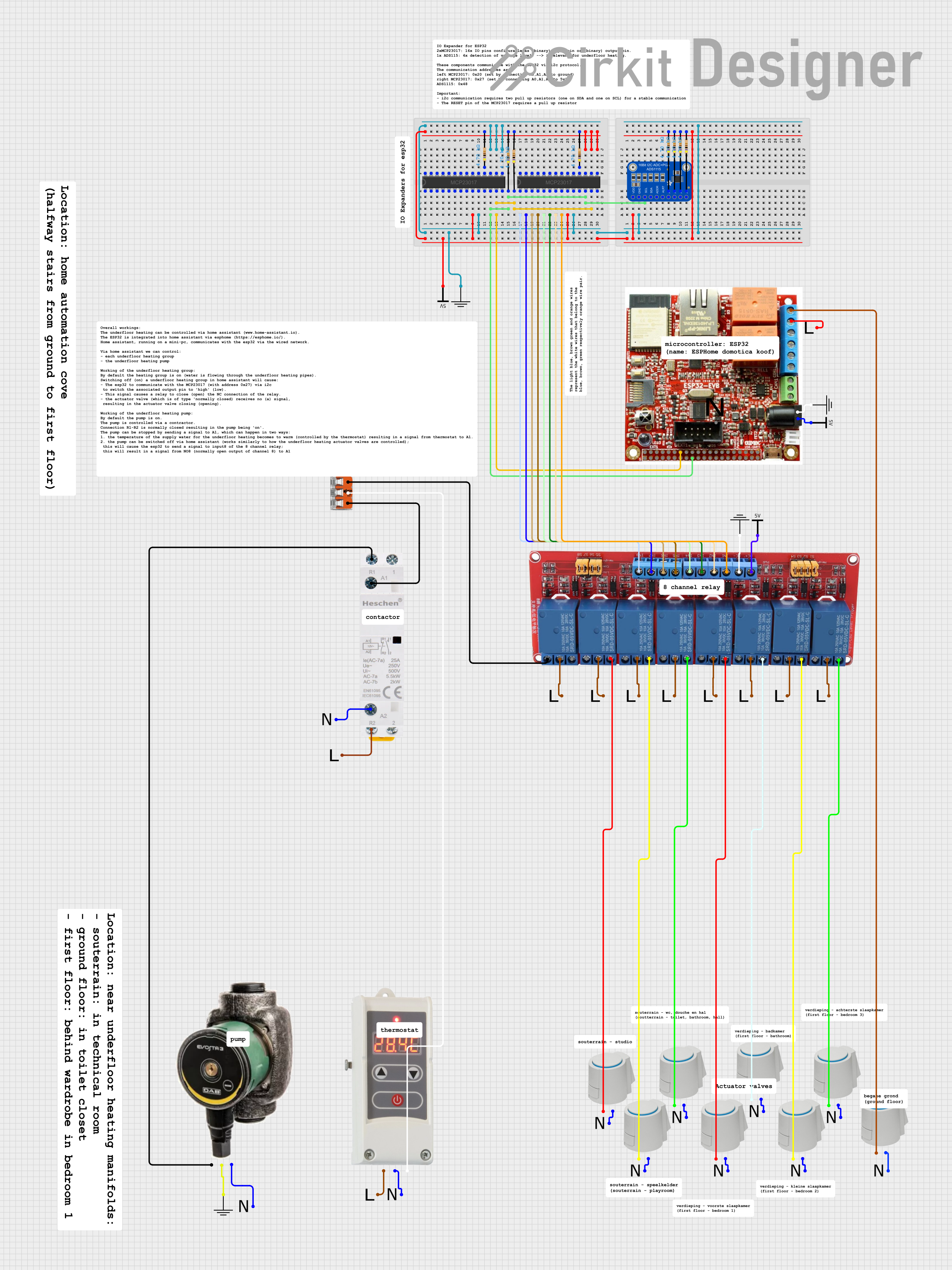
How to Use MCP6004: Examples, Pinouts, and Specs

 Design with MCP6004 in Cirkit Designer
Design with MCP6004 in Cirkit DesignerIntroduction
The MCP6004 is a quad operational amplifier (op-amp) designed for low-power applications. It is part of Microchip's MCP600x series and is ideal for battery-operated devices due to its low power consumption. The MCP6004 features a wide supply voltage range (1.8V to 6.0V), high input impedance, and low output distortion, making it suitable for a variety of analog signal processing tasks.
Explore Projects Built with MCP6004

 Open Project in Cirkit Designer
Open Project in Cirkit Designer
 Open Project in Cirkit Designer
Open Project in Cirkit Designer
 Open Project in Cirkit Designer
Open Project in Cirkit Designer
 Open Project in Cirkit Designer
Open Project in Cirkit DesignerExplore Projects Built with MCP6004

 Open Project in Cirkit Designer
Open Project in Cirkit Designer
 Open Project in Cirkit Designer
Open Project in Cirkit Designer
 Open Project in Cirkit Designer
Open Project in Cirkit Designer
 Open Project in Cirkit Designer
Open Project in Cirkit DesignerCommon Applications
- Signal amplification in battery-powered devices
- Sensor signal conditioning
- Active filters and integrators
- Analog-to-digital converter (ADC) buffering
- Portable medical devices
- Audio preamplifiers
Technical Specifications
Key Technical Details
| Parameter | Value |
|---|---|
| Supply Voltage Range | 1.8V to 6.0V |
| Supply Current (per op-amp) | 100 µA (typical) |
| Input Offset Voltage | ±4.5 mV (maximum) |
| Input Impedance | 10⁶ MΩ (typical) |
| Gain Bandwidth Product | 1 MHz |
| Slew Rate | 0.6 V/µs |
| Output Voltage Swing | Rail-to-rail |
| Operating Temperature Range | -40°C to +85°C |
| Package Options | PDIP, SOIC, TSSOP |
Pin Configuration and Descriptions
The MCP6004 is available in an 14-pin package. Below is the pinout and description:
Pinout Table
| Pin Number | Pin Name | Description |
|---|---|---|
| 1 | OUT A | Output of Op-Amp A |
| 2 | IN- A | Inverting Input of Op-Amp A |
| 3 | IN+ A | Non-Inverting Input of Op-Amp A |
| 4 | VSS | Ground (Negative Power Supply) |
| 5 | IN+ B | Non-Inverting Input of Op-Amp B |
| 6 | IN- B | Inverting Input of Op-Amp B |
| 7 | OUT B | Output of Op-Amp B |
| 8 | OUT C | Output of Op-Amp C |
| 9 | IN- C | Inverting Input of Op-Amp C |
| 10 | IN+ C | Non-Inverting Input of Op-Amp C |
| 11 | VDD | Positive Power Supply |
| 12 | IN+ D | Non-Inverting Input of Op-Amp D |
| 13 | IN- D | Inverting Input of Op-Amp D |
| 14 | OUT D | Output of Op-Amp D |
Usage Instructions
How to Use the MCP6004 in a Circuit
- Power Supply: Connect the VDD pin to the positive power supply (1.8V to 6.0V) and the VSS pin to ground.
- Input Connections: Connect the signal source to the non-inverting (IN+) or inverting (IN-) input of the desired op-amp channel.
- Output Connections: The amplified or processed signal will be available at the corresponding output pin (OUT).
- Feedback Network: Use resistors, capacitors, or other components to configure the op-amp for the desired operation (e.g., gain, filtering).
- Bypass Capacitor: Place a decoupling capacitor (e.g., 0.1 µF) close to the VDD pin to reduce noise and stabilize the power supply.
Important Considerations
- Input Voltage Range: Ensure the input voltage stays within the common-mode range of the op-amp (0V to VDD).
- Load Impedance: Avoid driving low-impedance loads directly from the op-amp output to prevent distortion.
- Temperature Effects: The MCP6004 operates reliably within the specified temperature range (-40°C to +85°C).
Example: Using MCP6004 with Arduino UNO
The MCP6004 can be used to amplify an analog signal (e.g., from a sensor) before feeding it into an Arduino UNO's ADC. Below is an example circuit and code:
Circuit Description
- Connect the MCP6004's VDD to the Arduino's 5V pin and VSS to GND.
- Use one op-amp channel (e.g., Op-Amp A) to amplify the sensor signal.
- Connect the amplified output (OUT A) to an analog input pin on the Arduino (e.g., A0).
Arduino Code Example
// MCP6004 Example: Reading an amplified sensor signal
// Connect the MCP6004 output (e.g., OUT A) to Arduino analog pin A0
const int sensorPin = A0; // Analog pin connected to MCP6004 output
void setup() {
Serial.begin(9600); // Initialize serial communication
}
void loop() {
int sensorValue = analogRead(sensorPin); // Read the amplified signal
float voltage = sensorValue * (5.0 / 1023.0); // Convert ADC value to voltage
// Print the voltage to the Serial Monitor
Serial.print("Amplified Signal Voltage: ");
Serial.print(voltage);
Serial.println(" V");
delay(500); // Wait for 500ms before the next reading
}
Troubleshooting and FAQs
Common Issues and Solutions
No Output Signal:
- Cause: Incorrect power supply connections.
- Solution: Verify that VDD is connected to a valid voltage source and VSS is connected to ground.
Distorted Output:
- Cause: Driving a load with too low impedance.
- Solution: Use a buffer or ensure the load impedance is within the op-amp's capabilities.
High Noise in Output:
- Cause: Insufficient power supply decoupling.
- Solution: Add a 0.1 µF ceramic capacitor close to the VDD pin.
Incorrect Gain:
- Cause: Misconfigured feedback network.
- Solution: Double-check the resistor and capacitor values in the feedback loop.
FAQs
Q1: Can the MCP6004 operate with a single power supply?
A1: Yes, the MCP6004 is designed to operate with a single supply voltage ranging from 1.8V to 6.0V.
Q2: What is the maximum output current of the MCP6004?
A2: The MCP6004 can source or sink up to 23 mA (typical), but it is recommended to use it with higher load impedances to minimize distortion.
Q3: Can I use the MCP6004 for audio applications?
A3: Yes, the MCP6004's low distortion and rail-to-rail output make it suitable for audio preamplifiers and other audio signal processing tasks.